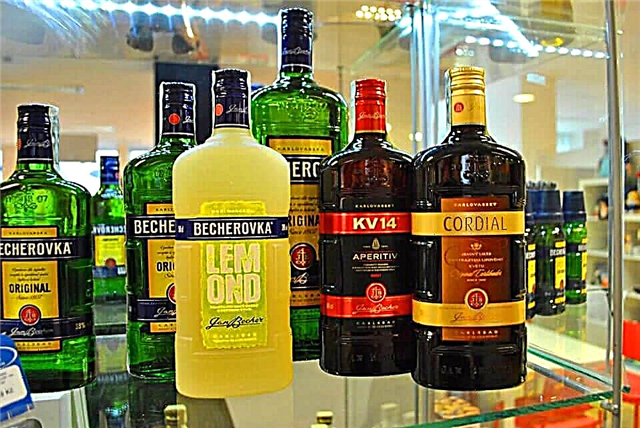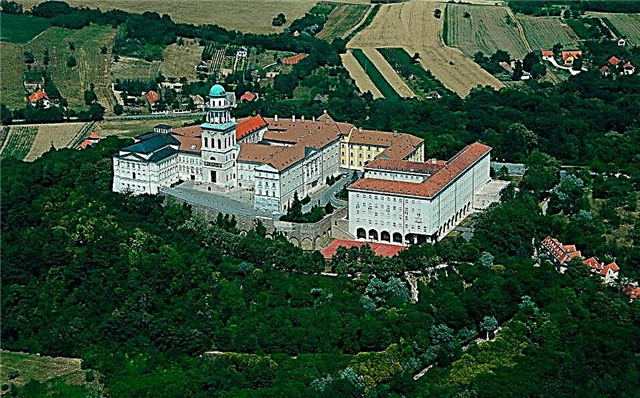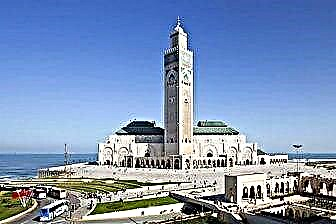Address: Russia, Yaroslavl region, Yaroslavl, Sovetskaya square
Start of construction: 1647 year
Completion of construction: 1650 year
Coordinates: 57 ° 37'36.2 "N 39 ° 53'39.9" E
Cultural heritage site of the Russian Federation
Content:
The Ilyinsky temple, built in the middle of the 17th century, has become one of the hallmarks of ancient Yaroslavl. It is unique primarily in that it has retained its rich interior decoration. The beautiful paintings and carved gilded iconostasis of the 17th century that have survived to our time recognized as the pinnacles of ancient Russian art. And many of the images, painted especially for this church, were created by the famous Russian icon painter Fyodor Zubov.
History of the construction of the church
The Church of Elijah the Prophet is believed to have been the very first Orthodox church in the city, founded by Yaroslav the Wise. The dedication of the temple to Elijah the Prophet had a foundation. It was on the day of the commemoration of this saint that the legendary battle of the Yaroslavl prince with the bear took place. But the very first church stood, presumably on the place where the Ilyinsko-Tikhonovskaya church now stands.

View of the church from Sovetskaya Square
The modern Ilyinsky temple was preceded by two wooden churches - a cold one in honor of Elijah the Prophet and a warm Pokrovskaya one. The decision to build a new stone church was made by the Yaroslavl merchants brothers Ioannikiy Ivanovich and Vonifatiy Ivanovich Skripin. They came from a wealthy merchant family who moved to Yaroslavl from Novgorod and traded in furs, pearls and church utensils. The scale of the Skripins' trade is evidenced by the fact that goods were bought from them by the royal and patriarchal courts, and even by merchants from Western Europe. The brothers were considered the largest buyers of furs in Russia and received fabulous profits. Among other things, they were a very religious and educated family.
The Skripins wanted to build a new temple in the household courtyard of their estate, located in the central part of the Yaroslavl Posad, next to the trading square. Construction lasted three years and was carried out by local architects, whose names have not been preserved in history. In 1650, the tall Elias Church, visible from everywhere, was ready. With her, for the rich gift of Tsar Alexei Mikhailovich - a particle of the Lord's Robe, a hipped side-chapel was specially built. And the precious shrine itself was solemnly presented to the new church by the Patriarch of All Russia Joseph.
The external facades of the new church were painted with "herbs" - stylized floral ornaments. This painting has not survived to this day. The green tiles originally made for the domes did not reach, and in the 18th century they were replaced with a flake covering.
The history of the temple from the 17th to the 20th century
Eight years later, in 1958, there was a big fire in the city. The facades of the Elias Church were badly burned, but, fortunately, it was not damaged inside.

View of the church from the west
In 1680, the temple was painted in three summer months. All artwork was performed by an artel of 15 Yaroslavl icon painters, led by the famous Kostroma masters Guriy Nikitin and Sila Savin. In the "Book of Church Building" it was noted which of the iconographers were invited, and which icons were created.
In the 80s of the 18th century, when Yaroslavl was reconstructed according to the new city planning, a square of the same name was created near the Elias Church. Later, in the last century, it was renamed Soviet.
In the last years of the 19th century, the temple was surrounded by a beautiful fence, the project of which was carried out by the academician of architecture Andrei Mikhailovich Pavlinov. And at the turn of the XIX and XX centuries. the church was repaired with funds allocated by the Yaroslavl mayor, philanthropist and entrepreneur Ivan Aleksandrovich Vakhromeev. During these restoration works, the ancient frescoes were completely cleaned and washed. And it turned out that for more than two hundred years, the colors on them remained bright and juicy.
In 1920, the temple was given the status of an architectural monument and transferred to the Yaroslavl City Museum. A particle of the Lord's Robe and valuable liturgical utensils taken from the church were transferred to the museum funds. For some time, exhibitions of ancient sewing, ancient icons and rare items for church services were held here.
In the 30s of the last century, when there was a widespread struggle against religion, only thanks to the persistent opposition of the museum staff, it was possible to avoid the destruction of this architectural monument. Later, since 1938, a museum of anti-religious propaganda, created by the local public organization "Union of Militant Atheists", existed in the building for several years. One of its exhibits was a Foucault pendulum suspended under a church dome. When the Great Patriotic War began, the director of the anti-religious museum V.M. Kovalev was sent to the front, and the museum itself was closed.

View of the church from the north
After the end of the war, the church housed museum funds. And since the mid-50s of the last century, restoration work has been carried out in it three times. The chapels and church chapels were covered with special tiles, which were made according to the old technologies of Yaroslavl architects in the workshop of the famous restorer-ceramist Alexei Alekseevich Yegorov. In addition, the crosses were gilded, the fence around the temple was repaired, and the murals were again deducted from the dust accumulated over the decades. In 1989, the consecration of the church throne took place.
Architecture and interior decoration of the church
The architectural design of the temple was made in the best traditions of ancient Russian architecture. A massive four-pillar quadrangle is placed on a high basement and has three altar apses from the east. The temple is crowned with a large five-domed dome. Its light drums are decorated with patterned belts and surrounded by graceful kokoshniks. And on the green domes there are massive gilded crosses. The central one was forged from iron by city farriers in the 17th century. The church today remains one of the highest in the city, second only to the Yaroslavl Assumption Cathedral and the Church of St. John the Baptist in Tolchkovskaya Sloboda.
The overall composition of the temple is asymmetric. The summer church located in the center is surrounded by additional volumes. This is an independent domed limit, a bell tower, a hipped chapel of the Deposition of the Robe, as well as two-tiered covered galleries with two porches - on the western and northern sides. The large zakomars that complete the quadrangle are slightly hidden by the hipped roof built later. This is a complex, so-called, cathedral composition. And once you change your point of view a little, the church appears in a completely different image.
A tent-roofed multi-tiered bell tower adjoins the temple from the north-west. The tier, designed for ringing, is framed with beautiful keeled ends. And in the tent itself, to improve acoustics, narrow auditory holes are made in two rows.

View of the church from the north-west
The Chapel of the Robe deserves special attention. This part of the Elias Church is very beautiful, light and, at the same time, majestic. The lower part of the side-chapel is a massive octagon set on a quadrangular base. At the top, the side-chapel is completed with an octagonal openwork tent. Besides him, all church facades are decorated with decorative elements.
In the north aisle, in the gallery, there was the house church of the Skripins merchants and their family tomb. However, after the brothers, who left no heirs, the Skripin family did not continue. According to their will, the Elias Church, the lands and all the trading enterprises of the merchants were transferred to the city. Therefore, at the end of the 17th century, the church became a parish church.
The main treasure of the Ilyinsky Church is its rich old decoration. Several scientific monographs and many articles are devoted to the icons stored here.The murals, into the plots of which many everyday scenes are interwoven, amaze with their beauty, brightness and conveyed joyful, light mood. In addition to them, in the Elias Church you can see the gilded iconostasis preserved from the end of the 17th century, carved and decorated in the traditions of the Moscow Baroque. It is decorated with unique icons painted by the famous tsarist master-painter Fyodor Evtikhievich Zubov. There are also many ancient liturgical utensils in the temple.
The current state of the temple and the visiting regime
Elias Church is active and has several side-altars. Services in it are held only on major church holidays in the summer. The rest of the time the temple works as a branch of the Yaroslavl Museum-Reserve. You can get into it from May to October from 8.30 to 19.30, except on Wednesdays and rainy days.

View of the church from the south
How to get there
Elias Church is located in Yaroslavl on Sovetskaya Square, 7.
By car. The federal highway M8 leads from Moscow to Yaroslavl. Within the city limits, it is called Moskovsky Prospekt. On it, you need to cross the Korotosl River across the bridge, and then turn right onto Nahimson Street, which will lead to the building of the temple on Sovetskaya Square.
By train. From Moscow to Yaroslavl, express train trains reach in 3 hours 16 minutes. The journey by regular train takes from 4 to 5.5 hours. From Moskovsky railway station in Yaroslavl, the distance to the Church of Elijah the Prophet is 3.3 km. They can be walked or taken by minibus.











